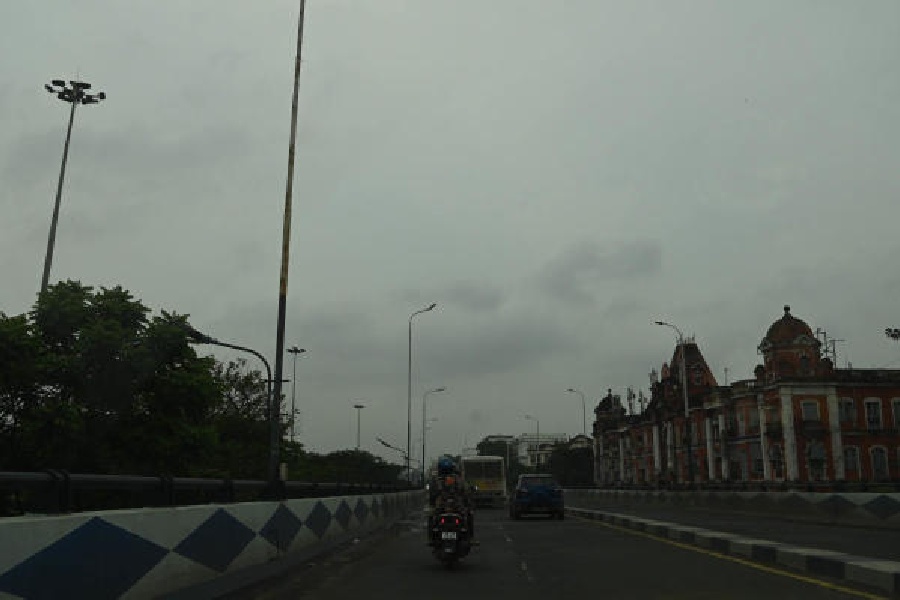
April 16: The seed was sown by the Left government; the Trinamul government may enjoy the fruit.
Call it the irony of ironies. The environmental act created about a decade ago to protect the internationally acclaimed East Calcutta Wetlands off the EM Bypass, the city's unique natural sewage system where change of land use is prohibited by court orders and international norms, itself allows the violation of the wetlands. The act has paved the way for filling up of water bodies and backdoor entry of real estate into the area. Even as the current mayor and environment minister, Sovan Chatterjee, proposes to set up a garbage dump in the wetlands and other "ecotourism" projects, Metro looks at the act and its contradictions:
Filling up is okay
In 2006, the Bengal government created the East Calcutta Wetlands (Conservation and Management) Act 2006. Under the act, the East Calcutta Wetlands Authority was created under the chairmanship of the chief secretary mainly to protect and conserve the wetlands area, called the "kidneys of the city", as every day it purifies millions of litres of waste water from the city through natural action. It is recognised by the Ramsar Convention, the international convention on wetlands, which mandates that land use should not be altered in the East Calcutta Wetlands.
However, sections 10(4) and 10(5) in the act empower the authorities to allow any person to fill up any water body if he or she creates "a water body of which the area shall not be less than the area of the water body which may be so filled up" within the East Calcutta Wetlands, provided the change of land use is "for improvement or upkeep of the local environment and its surroundings".
'Illegal' act
Environment and legal experts, and government officials, accept that the act -particularly its provision of allowing the filling up of a water body against creating a compensatory water body - is illegal as it completely contradicts a 1992 Calcutta High Court order. The order passed by Justice Umesh Chandra Banerjee, in relation to the case filed by PUBLIC, an NGO, and the Bengal government, barred any change of land use in the East Calcutta Wetlands area, particularly in the water bodies and agricultural land.
"This is grossly illegal as the act clearly violates the 'no land use change' directive of Calcutta High Court. The government should have gone to the high court requesting modification of its order before passing the wetlands act. As chief law officer, I had raised the issue with my seniors but there was little response," said Biswajit Mukherjee, retired chief law officer in both the state pollution control board and the environment department. "The act's provision (of filling up of water bodies) contradicts the high court order," said Asish Ghosh, wetlands expert and retired director of the Zoological Survey of India.
"I have to accept that we did not consider the anomaly. Even the law cell did not point it out," admitted a senior environment department official, part of the initiative to introduce the act.
Open to violation
Documents available with Metro prove that the provision of filling up water bodies against the creation of compensatory ponds has been used several times. The most noted of them are by Sanjeevani Projects Pvt Ltd and Green Valley Towers Private Limited, to construct two huge residential complexes. Calcutta High Court directed the demolition of both constructions in 2005 as these had come up in complete violation of the previous high court order. However, the state and the real estate companies agreed to an out-of-court settlement; and the East Calcutta Wetlands Authority gave a nod to the projects by allowing these to create compensatory water bodies. The real estate companies claim that they have created compensatory wetlands; even the government officials remain unsure.
The minutes of the authority show that the body had given 162 "no-objection" certificates to change land use between 2010 and 2011, which they revoked afterwards. However, much damage had been done by then.
No muscle
In the past decade or so, the authority has filed close to 350 complaints at various police stations against illegal filling up of water bodies. However, barring in a few cases, hardly any action has been taken by the police.
All these years, the authority was headed by the chief secretary of state. Mayor Chatterjee, who is also housing and environment minister, has taken over as the authority chairperson. That leads to another set of contradictions!
WETLANDS: HISTORY SHEET
Vanishing: Filling up of water bodies, as is happening in the East Calcutta Wetlands, is less the exception, more the rule, in many areas. A Calcutta Metropolitan Development Authority study shows that between 1986 and 2005, the wetlands area in greater Calcutta shrunk from 14 per cent to 6 per cent. The water bodies are likely to have dwindled further since then.
Hotspots: The wetlands or water bodies under threat in greater Calcutta are Santragachhi Jheel and Jaypur Beel in Howrah, Dankuni wetlands and Hind Motors wetlands in Hooghly and Bilkanda and Kalyani wetlands in North 24- Parganas. Purbasthali wetlands, a 14-km stretch in Burdwan, about 120km from Calcutta, which is a bird haven, is under threat as well.
Reasons: The threats are many, but the major ones are indiscriminate construction, including building of roads; dumping of garbage and sewage water; and reclamation of agricultural land. Not only private real estate companies, but state government and central government agencies, particularly the railways, are also responsible for reduction of wetlands.
Why worry: Because the wetlands are extremely important environmentally. They contribute favourably to local microclimate, harbour aquatic ecosystems and biodiversity, particularly of birds, and function as local drainage basins, such as the East Calcutta Wetlands do, feed local agriculture, recharge the ground water table and are essential in case a fire breaks out.
Do you think wetlands should be protected? Tell ttmetro@abpmail.com










